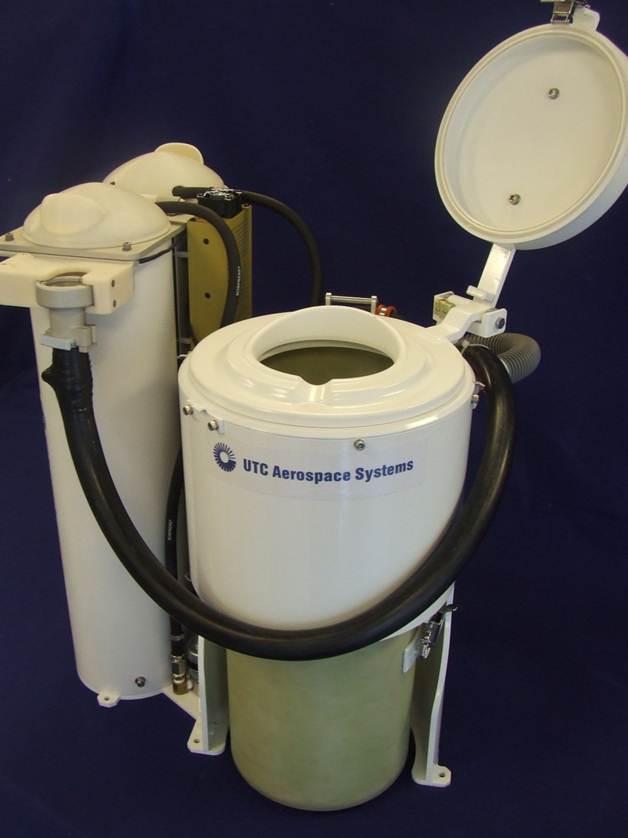The International Space Station is getting a new toilet this year

Later this year, if all goes well, the International Space Station will receive a very important delivery: a new and improved toilet system.
It has a fancier name, of course; officially, the commode is NASA's Universal Waste Management System (UWMS). The system is designed to bridge the gap between current lavatorial space technology and what humans will need to make extended visits to, say, Mars, in comfort. But there's nothing like a plumbing problem to make any trip seem much longer than it is, so before engineers take UWMS that far from the comforts of home, they want to test it in orbit.
The launch is targeted for no earlier than the fall, a NASA spokesperson confirmed to Space.com, although the agency is still determining what spacecraft will carry the new plumbing up.
Related: International Space Station at 20: A photo tour
In the long term, the new toilet is meant to prepare waste-management engineers for some of the challenges experts anticipate on future missions, Jim Broyan, a deputy program manager for Environmental Control and Life Support Technology and Crew Health and Performance at NASA's Johnson Space Center in Houston, said during a meeting of the Committee on Space Research, or COSPAR, on May 20.
The meeting focused on what human missions to Mars mean for planetary protection, the practice of looking to protect both Earth and the rest of the solar system from cross-contamination by living organisms. Waste collection and storage are ripe for such cross-contamination, of course, since human waste is full of microbes. So future Mars visitors won't necessarily be able to take the approach of Apollo astronauts on the moon, who simply left bags of human waste on the lunar surface.
For Mars missions, which by necessity will be much longer flights, volume is another challenge. Broyan said that current estimates suggest Mars missions would need to manage about 600 lbs. (270 kilograms) of solid waste, about 75% of which is water.
Breaking space news, the latest updates on rocket launches, skywatching events and more!
Those challenges mean that before humans head to Mars, waste-management experts have, well, a bucket list, Broyan said. "Our future goals are to stabilize and dry the metabolic waste to make it microbially inactive and possibly reuse that water, reduce the amount of consumables for the potty, because it does really accumulate on a long mission, and we're also looking at, Can we reuse some of the waste?"
And while the current standard practice of adding stench-dampening charcoal to fecal containers and storing those containers on the ship works now, for longer missions it is less appealing and may require too much mass.
The new station-bound toilet won't tackle all of those challenges single-handedly, but it will improve on previous NASA designs for the shuttle and space station and incorporate crew feedback about those systems. The UWMS is also crucial to support the larger population on the U.S. side of the space station that the coming rise in commercial crew missions will facilitate, according to NASA.
The toilet currently on offer on the U.S. side of the space station was designed in the 1990s and based on its shuttle counterpart, according to a detailed review of space toiletry. But the apparatus has its flaws. It can be clunky to use, particularly for women, and it is "sensitive to crew alignment on the seat," sometimes resulting in messes, according to that review.
So NASA has tried to keep the aspects that have gotten positive reviews while trimming mass and volume and making some design changes, like adjusting the shape of the seat and replacing the apparatus that compresses the waste.
Another change mimics a feature of the toilet on the Russian side of the space station, where astronauts simply hook their feet into toe bars, rather than the thigh bars used on the American equivalent to anchor the astronaut in the microgravity environment.
The UWMS will remain on the space station for the rest of the orbiting laboratory's lifetime, and a second toilet of the same model will fly on the Orion capsule that astronauts use to fly around the moon on the first crewed Artemis mission in NASA's ambitious lunar return plan, according to the agency.
- New virtual tour lets you explore the International Space Station
- A journey to Mars starts on the space station
- ISS tour: kitchen, bedrooms and the latrine
Email Meghan Bartels at mbartels@space.com or follow her @meghanbartels. Follow us on Twitter @Spacedotcom and on Facebook.
OFFER: Save 45% on 'All About Space' 'How it Works' and 'All About History'!
For a limited time, you can take out a digital subscription to any of our best-selling science magazines for just $2.38 per month, or 45% off the standard price for the first three months.

Meghan is a senior writer at Space.com and has more than five years' experience as a science journalist based in New York City. She joined Space.com in July 2018, with previous writing published in outlets including Newsweek and Audubon. Meghan earned an MA in science journalism from New York University and a BA in classics from Georgetown University, and in her free time she enjoys reading and visiting museums. Follow her on Twitter at @meghanbartels.


